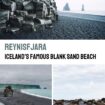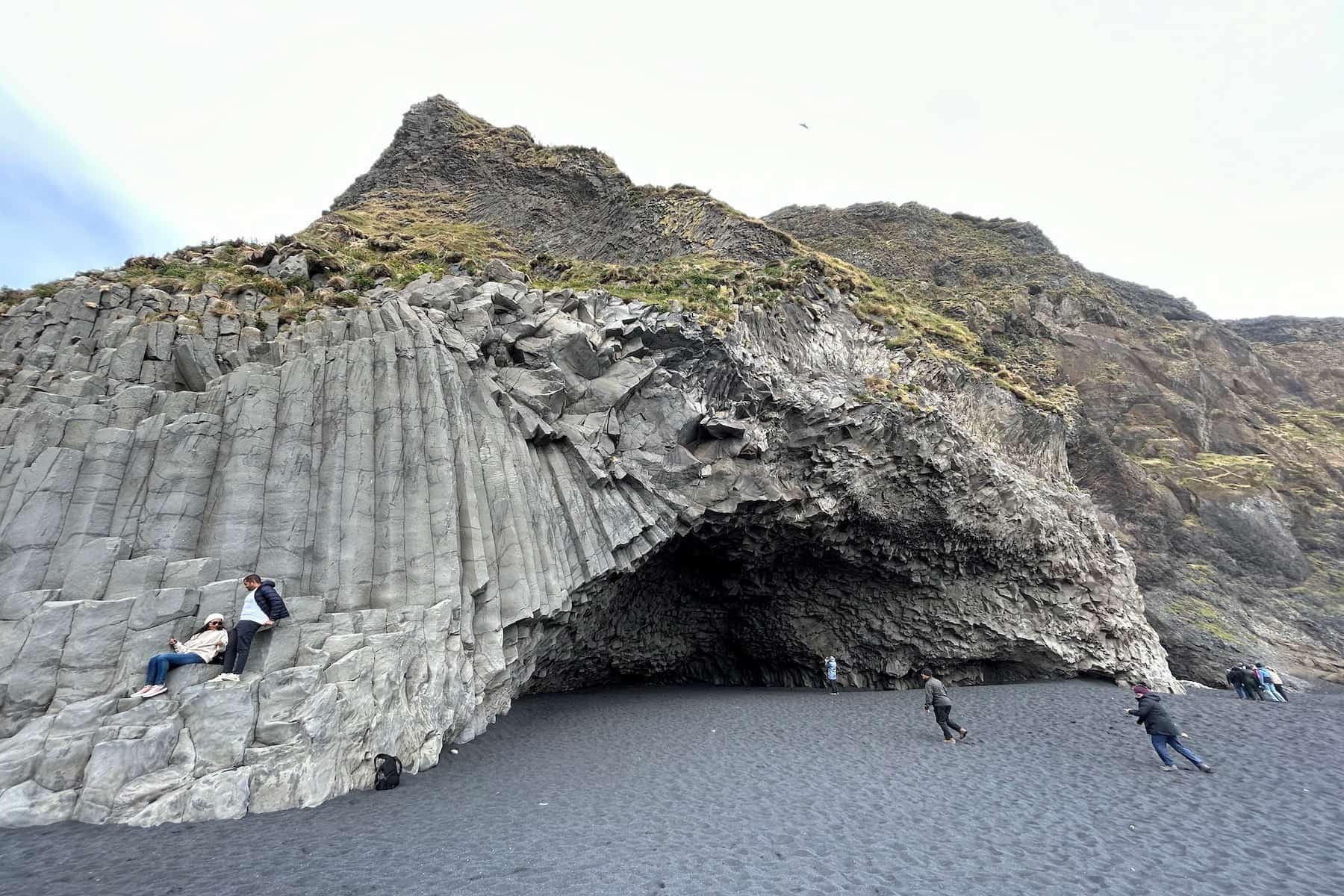
Go World Travel is reader-supported and may earn a commission from purchases made through links in this piece.
Iceland: land of fire and ice. Glacial paradise, where a volcano is never too far away. The perfect oxymoron.
This country gave me a deep sense of calmness as soon as I set foot on it. Not the I’m-finally-on-holiday type of relaxation. Not quite a yogic body-mind-spirit connection typical of a retreat. Not even apathy due to fatigue. It was complete and total stillness, as a direct result of simply being there.
I felt centred, as if my body’s own compass had recalibrated in an optimal direction after landing. Another oxymoron, considering I had travelled 17,000 kilometres in four planes over seven days and, quite frankly, my circadian rhythm was more than a depolarised compass. It was in pieces.
But already on the road from Keflavik International Airport to my guesthouse in Reykjavik city centre, on a chilly summer afternoon, the needle got its magnetism back.
On the Way There
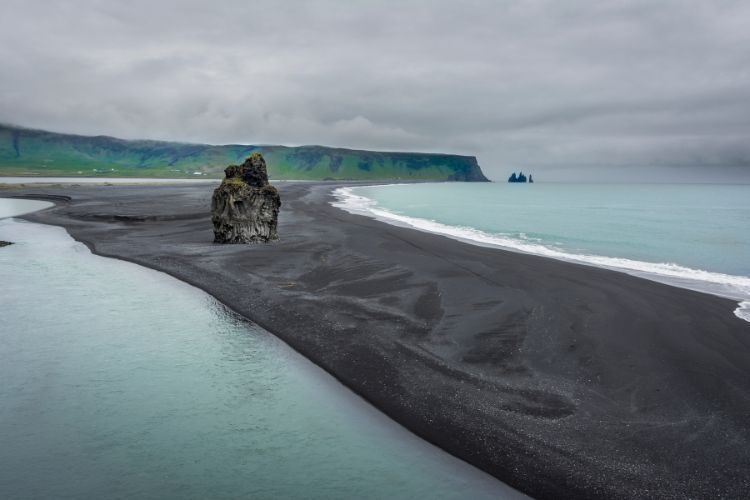
Peaceful to the nth power, on my second day, I was ready for Reynisfjara. This iconic black-sand beach on the south coast was supposed to be the highlight of my Nordic week.
The itinerary would also take me to the town of Vik via Skógafoss and Seljalandsfoss falls, and to Sólheimajökull glacier. All exciting and all equally impossible to pronounce beyond the first syllable.
On the way there from Reykjavik, there was no traffic. No noises. Not even trees. All was so quiet, like in a silent movie picture from the early 1900s.
Planning a last-minute trip to Iceland?
Top Experiences and Tours in Iceland:
- See the sights with a tour of Golden Circle, Blue Lagoon Including Admission & Kerid Volcanic Crater
- See glaciers on the Golden Circle & Glacier Snowmobiling Day Trip from Reykjavik
- Explore more with this tour of Northern Lights Yacht Cruise
Where to stay in Iceland:
- Find accommodation with Booking.com
- Find your dream apartment in Iceland with Agoda
- Find a hostel in Iceland with Hostelworld
Along each side of the main road were endless moss-covered lava fields. The flatness of this rugged terrain was interrupted only by mountain ranges. Some, nearby; others, far, far away on the horizon. A low, grey sky was looming.
We were advancing slowly, which added even more intensity to the situation. Every few kilometres or so, a village with red pointed roofs or a fuchsia gas station would appear, adding a vivid brush stroke to the otherwise black-and-white canvas. And reminding me to take a deep breath.
The Geology of Reynisfjara
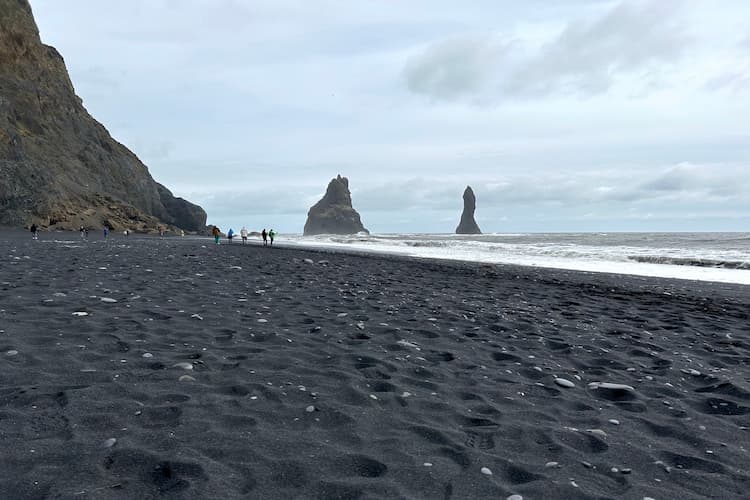
Upon arriving at Reynisfjara, a traffic light system was flashing orange, alerting us that today there was a medium wave hazard. That meant we couldn’t venture into the allegedly yellow zone of the beach and instead had to remain on higher ground, at a safe distance from the shore.
Our guide, Kristine, had warned us that this beach is much more dangerous than it might seem. Rogue waves (or “sneaker waves,” as she called them), which are unexpectedly longer than the immediately previous ones, put people’s life in danger on a daily basis.
“You should never turn your back to the water for the sake of a selfie with the ocean, here.”
Venturing Forward
Before entering the green zone, a strong wind welcomed me by slapping me in the face. I knotted my scarf tighter, pulled up my socks, flicked my jacket hood on top on my hat, and secured my hands deep inside my pockets. With this Thor-like armour, I felt more prepared to battle the Icelandic elements.
While my clothes were protecting me on the outside, inside, I was melting. My white sneakers sank in dark lava pebbles at each step, as I approached the yellow zone in trepidation. Behind, long, light-grey, almost perfectly hexagonal basalt columns reminded me of the organs in Reykjavik’s Hallgrimskirkja church.
In front, angry waves. Both to my right and left, the familiar-looking towering sea stacks, which I recognized from Games of Thrones. Above, a dance of flying puffins – even if, I must admit, they were smaller than I expected. I could have kept looking in all possible directions for hours (never turning my back to the ocean, of course).
Kristine explained that the basalt colonnade is the result of the heating, cooling, shrinkage and elongation of melted lava rocks during one of the eruptions of the dangerous Katla volcano.
Yet it was easier to imagine that these stacked hexagonal cylinders had been shaped by nature’s hand with chisel and ruler. The columns eventually gave way to a large cave called Hálsanefshellir, and to a second, smaller one further down.
Read More: Hotel Húsafell, the Magical Northern Lights Hotel in Iceland
Troll Folklore and Reynisfjara
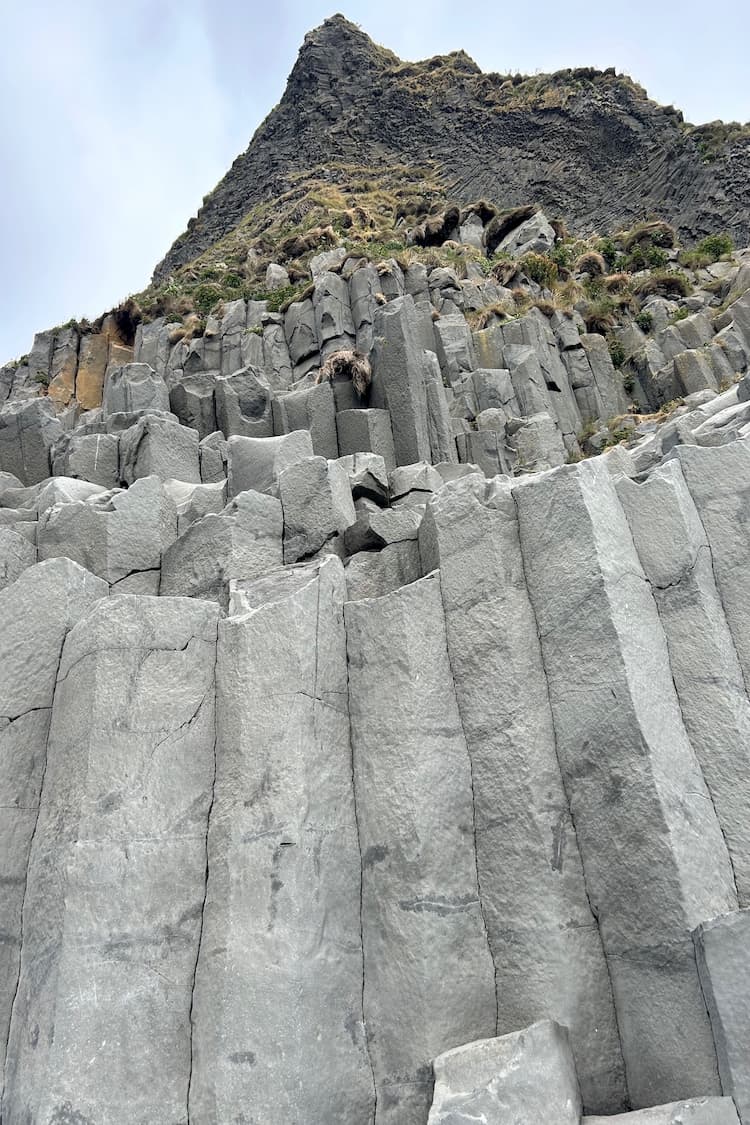
The sea stacks at one extremity of the coastline are also volcanic rocks eroded by powerful wave action, but tradition says trolls reside around here.
According to these tales, the needles of rocks emerging from the water are actually night trolls that got caught up in the daylight as they were trying to lure a three-masted ship to shore. Since trolls can only survive at night, they ended up petrified. Whenever it happened, I assume it wasn’t in summer, during the midnight sun.
Before my departure, I had read several articles about Iceland’s fascination with huldufólk (‘hidden folk’ who live in rocks), elves and trolls – all part of the Norse mythology since the 1200s.
I had read that the great majority of Icelandic respondents to a survey issued in the last fifteen years didn’t deny the existence of elves. Another article discussed the ominous consequences that had happened whenever road works dared to disrupt elf habitat. Now, I was about to live and breathe this Icelandic obsession first-hand.
Read More: Soak Up Iceland: Simmering in the Blue Lagoon
Taking Lava Souvenirs
After having been enchanted by Reynisfjara, the spell ended abruptly when it was time to return to our coach. Kristine – who, in elfish fashion, sported blue hair, wide eyes and a pale complexion (but no pointed ears) – asked if anyone had taken any lava stones from the beach as a souvenir.
She reminded us that trolls might dwell there, and that they wouldn’t be happy if someone had removed a piece of their furniture.
“You wouldn’t like it if someone stole a sofa from your house, would you? And by the way, if you’ve taken anything with you, it’s said to bring bad luck. I’ll give everyone a minute to return whatever has been taken.”
Like a class of schoolkids who look down on their books during cold calling, everyone became immobilised. I just couldn’t keep my eyeballs from rolling sideways, too curious to see what my fellow travel mates would do.
That’s how I spotted something wrong with the Italian family on my left. The father furtively took two smooth round lava rocks from the pocket of his fleece and, by opening his palm, revealed them to his wife. Surpriiise!
She first rolled her eyes and then proceeded to turn her head 180 degrees towards the window. He put the stones back in his pocket, regretful. Everyone else sat unaware.
“Okay, it looks like we’re ready to continue,” announced Kristine from the front of the coach.
As the driver turned on the engine, Kristine told us the story of “a friend’s friend”, who “snitched” some lava rocks from Reynisfjara, didn’t return them when given the chance to, and “coincidentally” got a flat tire on her way back to Reykjavik.
The culprit eventually felt obliged to admit the misdeed to her travel companions and left the rocks behind. “But it was too late.” Kristine also concluded that she’s not really superstitious; only just in case.
The Icelandic phrase I had learnt the previous day started spinning in my head (without a doubt, with the wrong pronunciation): Þetta reddast, everything will be just fine.
Just in Case
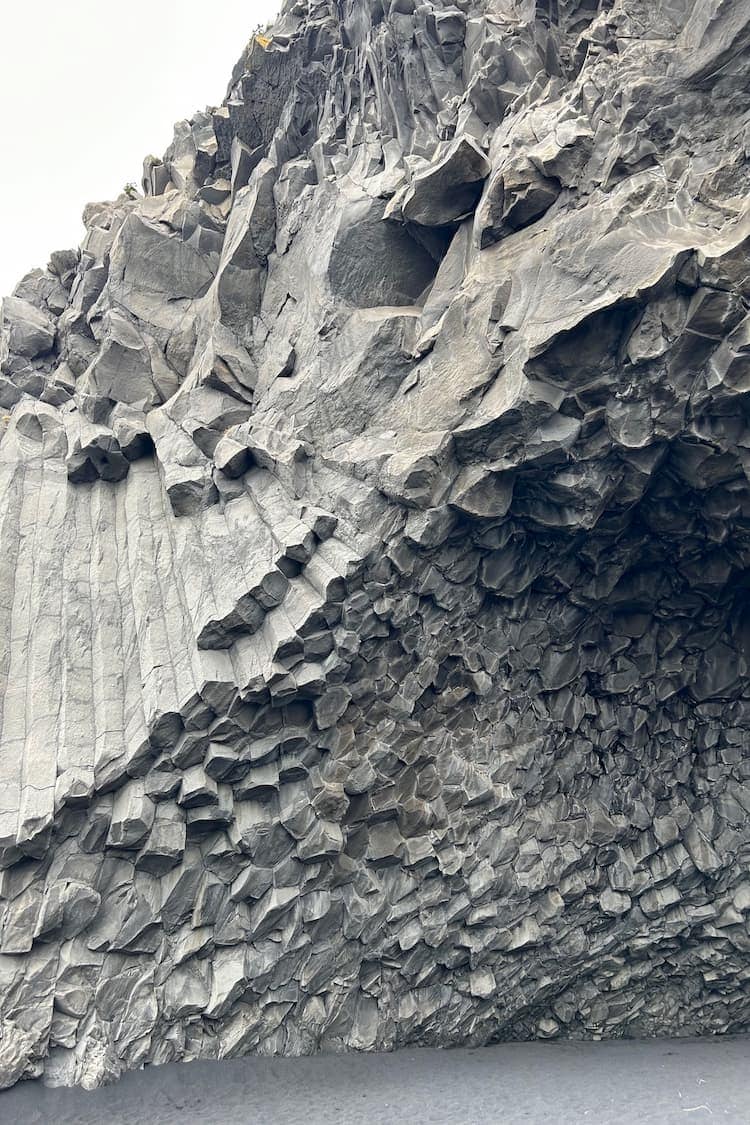
At last, we were on the road to Seljalandsfoss, the last cascade for the day. In a country of waterfalls, this one was special because you can walk behind it. The river that births it has its origins in the Eyjafjallajökull glacier volcano.
That’s the volcano lying underneath a glacier that put Iceland back on the map with its disruptive 2010 eruption – and following explosion of tourism. Among many unpronounceable nouns, Eyjaf– well, that one, was finally a recognizable one. Still unpronounceable though.
After a short ride, there was Seljalandsfoss. We could see it in the distance; all sixty monumental meters of it. Plus a river! Plus a rainbow! We’re coming … almost there … okay, that’s it!
As we made the last turn to get to the car park, our coach crashed the full length of its left-hand side against the guard rail. And if that wasn’t enough, it also hit a road sign.
Was Kristine right? Did the Italian tourist piss off the trolls, to the body shop mechanic’s advantage? I don’t believe it, but this is what happened.
Like Kristine and many other Icelanders, the next time I visit Iceland, perhaps I should also be more embracing of centuries-long Nordic folklore. Next time, I’ll also consider declaring that I’m not superstitious, but it doesn’t hurt to believe in wondrous creatures with supernatural powers. Just in case.
If You Go:
Inspire your next adventure with our articles below:
Author Bio: Laura Olcelli is a freelance travel writer and journalist currently based in Sydney, Australia, and a regular contributor to Matador Network, Intrepid Times and more. She has a PhD in English focused on travel literature and has published widely about literary criticism applied to travel writing, including the award-winning book Questions of Authority: Italian and Australian Travel Narratives of the Long Nineteenth Century. Laura was born in Italy, has lived in five countries and travelled to over 50.
- 12 Cool Things to Do in Tbilisi, Georgia’s Vibrant Capital - April 29, 2024
- Travel Guide to Spain - April 28, 2024
- Travel Guide to Scotland - April 28, 2024

